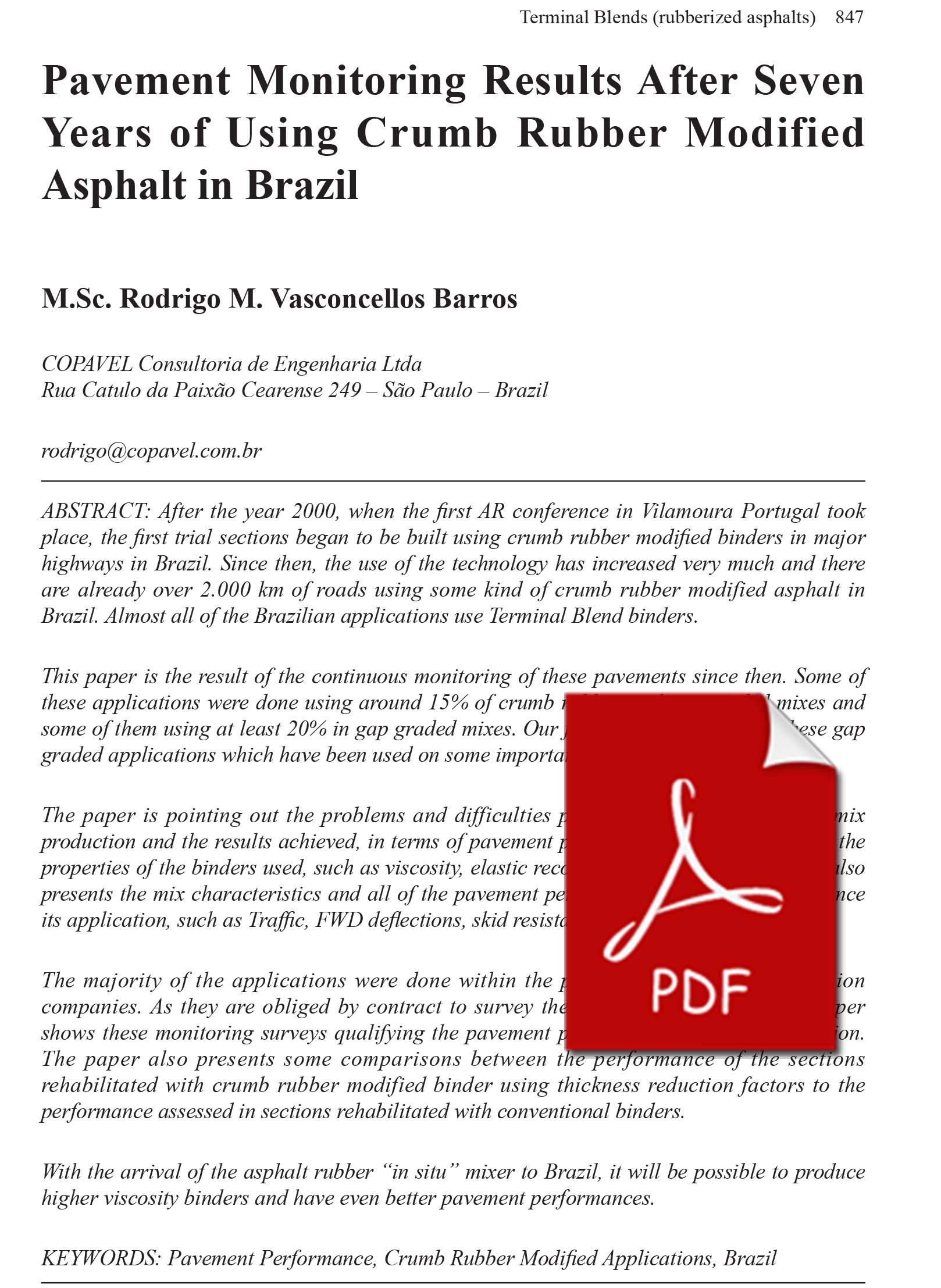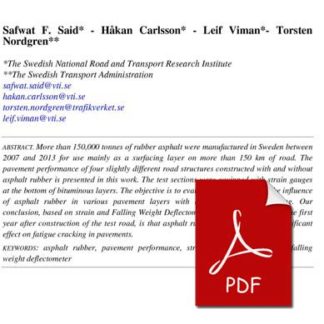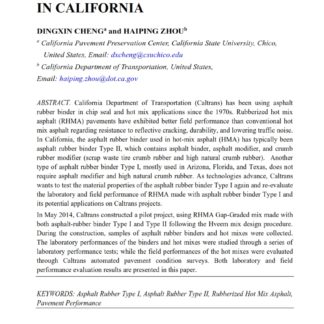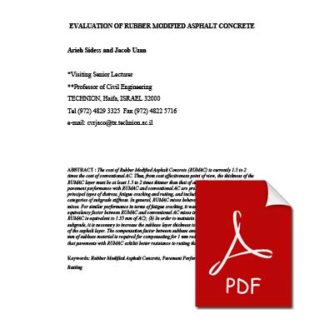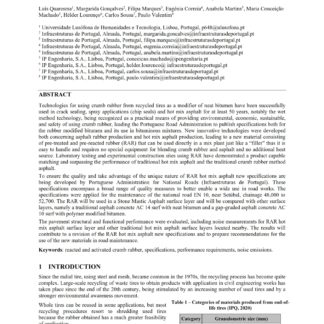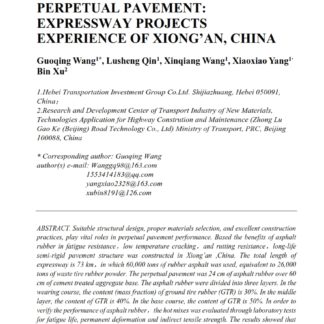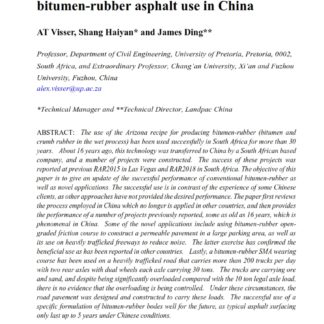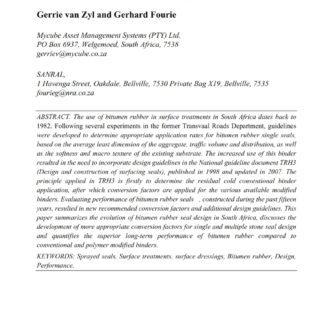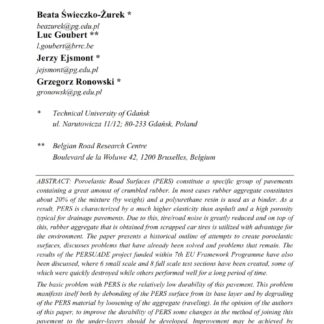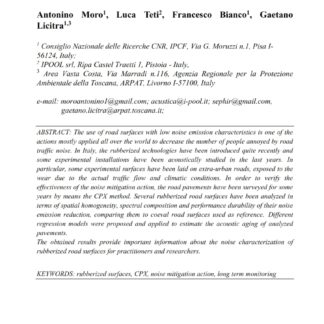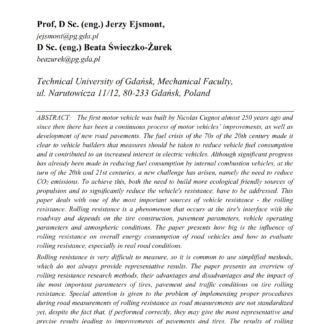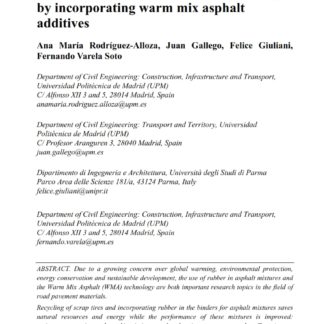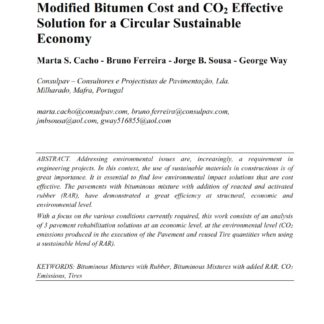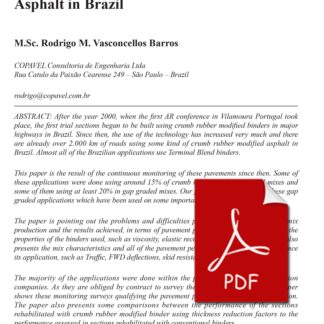Description
After the year 2000, when the first AR conference in Vilamoura Portugal took place, the first trial sections began to be built using crumb rubber modified binders in major highways in Brazil. Since then, the use of the technology has increased very much and there are already over 2.000 km of roads using some kind of crumb rubber modified asphalt in Brazil. Almost all of the Brazilian applications use Terminal Blend binders.
This paper is the result of the continuous monitoring of these pavements since then. Some of these applications were done using around 15% of crumb rubber in dense graded mixes and some of them using at least 20% in gap graded mixes. Our focus in this paper is on these gap graded applications which have been used on some important Brazilian highways now.
The paper is pointing out the problems and difficulties presented during the asphalt mix production and the results achieved, in terms of pavement performance. The paper shows the properties of the binders used, such as viscosity, elastic recovery, penetration, flow etc. It also presents the mix characteristics and all of the pavement performance related data ever since its application, such as Traffic, FWD deflections, skid resistance and ride quality.
The majority of the applications were done within the private sector in toll concession companies. As they are obliged by contract to survey the pavement every year, the paper shows these monitoring surveys qualifying the pavement performance since its application. The paper also presents some comparisons between the performance of the sections rehabilitated with crumb rubber modified binder using thickness reduction factors to the performance assessed in sections rehabilitated with conventional binders.
With the arrival of the asphalt rubber “in situ” mixer to Brazil, it will be possible to produce higher viscosity binders and have even better pavement performances.

